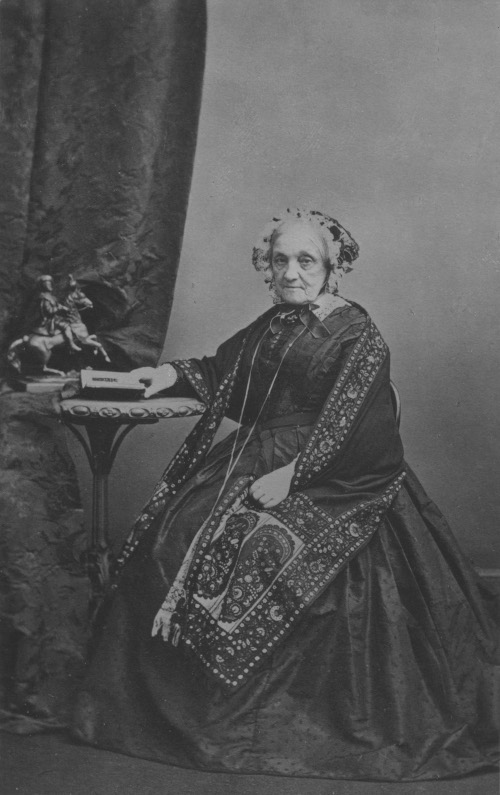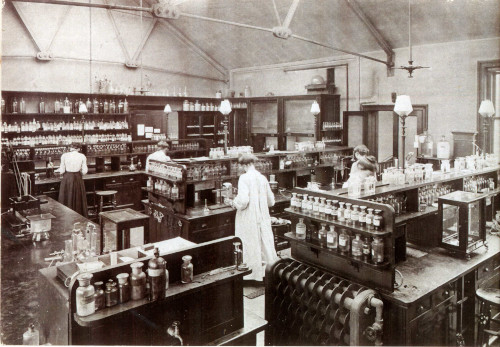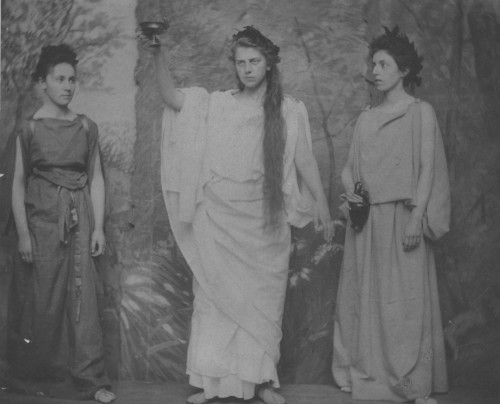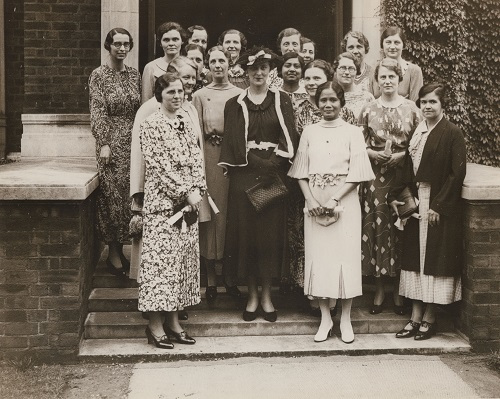Archives Hub feature for October 2019
170 years ago this month, Bedford College was opened in central London, becoming the first higher education college for women of its kind in the country. It was the brainchild of Elizabeth Jesser Reid, who said it had been her dream since childhood to found a college for women. Her aim for the college was to open up higher education so that women could study at the same level as men and study subjects which at the time were thought of as masculine and not suitable for ladies. These subjects; including the sciences, maths, and Greek, all appear on early timetables for the College’s classes. Elizabeth Jesser Reid’s papers are held within the Bedford College archive and reveal her connections with other prominent women of the time including Jane Martineau, Florence Nightingale, Eliza Bostock and Anna Swanwick.

The early years of the College were difficult financially; the student numbers were not as high as Elizabeth Jesser Reid had hoped and there were complaints from the lecturers that students were ill prepared for their classes. This prompted Reid to found a school in the same building to better prepare the students for higher education. Initially the lecturers were all male but Reid stipulated that women should be on the council, and four of the nine members were female. These women were part of the group of Lady Visitors who acted as chaperones to the students attending lectures, ensuring decorum in the classroom. They also helped with the organisation and running of the College, as there were very few administrative staff when it first opened, and their influence was felt throughout the College.

The early students often lived at home and travelled into college each day to attend classes, and in the first few decades it wasn’t unusual for women to attend one or two classes a week, rather than taking a full time course. It wasn’t possible for the students to obtain degrees until 1878 when the University of London first allowed women to graduate, the first university in the country to do so. Although Reid wanted to provide academic courses rather than being a training school for governesses, the College did offer teacher training from the 1890s and many of the students went on to teach, as it was deemed a suitable career for a woman at the time.

The teaching of Greek at Bedford resulted in performances of Greek plays put on by students to external audiences. These were a way to prove that women were capable of mastering the language and, with an all-female cast, were turning the tradition of an all-male cast on its head. Bedford’s teaching also included drawing classes, attended by Charles Dickens’ daughter Catherine, which allowed women to study life drawing from real people; again demonstrating the institution’s forward thinking approach to women’s education, as it was more usual for women to study life drawing from statues.

In the 1890s the College began to offer courses in public health and hygiene, which was a precursor to social work, and led to alumnae of the course going into health inspection. One of these women, Hilda Martindale, went on to become one of the first female government factory inspectors and spent her life campaigning for better working conditions for women and children. This course resulted in Bedford College setting up an international public health nursing course in conjunction with the League of Red Cross Societies and the College of Nursing in 1921. The course attracted students from all over the world including Japan, India, and countries across Europe. This section of the Bedford College archive was digitised and catalogued in detail with funding from The Wellcome Trust and is available to view online: Nursing and Public Health at Bedford College.

Bedford College grew from its small beginnings in a townhouse in Bedford Square and moved to larger premises in nearby York Place in 1874. In 1913 it moved again to Regent’s Park where it stayed until it merged with Royal Holloway College in 1985, except for a short evacuation to Cambridge during World War Two. The arrival of male postgraduates in 1945 and male undergraduates in 1965 changed the make up of the College but its history as a pioneering women’s institution is still celebrated today.
The Bedford College archive contains a wealth of material about the running of the college and the women and men who studied and worked there. As well as the more formal institutional records, it contains student magazines and photograph albums which give a sense of what it was like to study there. Our personal papers collections include those of prominent academics from Bedford College including Professor Caroline Spurgeon, a Shakespeare scholar who was involved in the International Federation of University Women.
Annabel Valentine
College Archivist
Royal Holloway, University of London
Related
Elizabeth Jesser Reid papers, 1786-1965
Nursing and Public Health at Bedford College, 1896-1980s
Bedford College Papers, 1849-1985
Papers of Professor Caroline Spurgeon, 1890-1936
Browse all Royal Holloway Archives and Special Collections, University of London descriptions available to date on the Archives Hub.
All images copyright Royal Holloway Archives and Special Collections, University of London and reproduced with the kind permission of the copyright holders.

Thank you! A fascinating read, Annabel!
Su Nicholls, BA French & Dutch, 1975-79